Revisiting Reginette, the Chintzier Sister Restaurant to Régine's
Meant for casual dining, Reginette still packed in celebs like Andy Warhol, Michael Musto, RuPaul & more
Located at 69 E. 59th Street between Madison and Park Avenues in Manhattan, Reginette, also known over the years as Cafe Reginette, La Reginette, Le Reginette or Brasserie Reginette, was a restaurant and multipurpose nightspot that became popular with many LGBTQ folks who worked in the arts, theater, fashion, and nightlife industries beginning in the late 1970s and throughout the 1980s. It first opened its doors at the end of 1977, intended to operate as the less formal sister restaurant to the then famous high-end membership club/discotheque, Régine's. Régine’s, which had opened in NYC just one prior, had quickly become one of the world’s most famous nightspots of its era, catering to the stretch-limousine crowd comprised primarily of arts and entertainment stars, society celebs, princes, playboys and the so-called “Beautiful People”.
Upon its opening in 1977, Cafe Reginette became just a small player in what grew to be a $500 million empire comprised of 23 clubs and venues open throughout Europe, the Middle East, and the Americas that collectively came to be known as Chez Régine. The woman behind it all was Rachelle Zylberberg, who was born on December 26th, 1929 in Anderlecht, Belgium to Polish Jewish parents. Zylberberg spent much of her early life hiding from the Nazis in occupied wartime France. Her unwed mother abandoned her as an infant, fleeing to Argentina, while her father was arrested by the Nazis when she was just 12 years old. Essentially orphaned, Zylberberg hid in a convent where she was reportedly beaten and after the war ended began peddling bras in the streets of Paris.
Going by the moniker Régine, Zylberberg then became a performer and torch singer and by 1953 was managing a nightclub in Paris. In 1957, she borrowed money and opened her own nightclub in a basement of a building in a backstreet of Paris. Unable to afford live music, patrons at the club danced to a jukebox, but business was so bad that Régine quickly concluded that the jukebox was to blame. She had it removed, and installed two turntables instead, so that there would be no gaps in the continupus playing of music. In an interview with the BBC, Régine stated: “I was barmaid, doorman, bathroom attendant, hostess, and I also put on the records. It was the first-ever discotheque, and I was the first-ever club disc jockey.” Indeed credited by many as the first discotheque in history, Chez Régine grew to be known as THE place to be seen for countless celebrities, socialites and royalty, and as Zylberberg's success and celebrity expanded, she started opening other venues under the name Chez Régine's in London, Monte Carlo and elsewhere.
In the 1970s, Régine officially moved to New York City into a suite at the Delmonico Hotel, located at 502 Park Avenue between East 59th and 60th Streets in Manhattan. In 1976, she opened Régine’s nightclub on the ground floor of the hotel, which would become her most successful venture, and lead the New York Post to dub her “Queen of the Night.” The club, which also served high end food under the direction of French chef Michel Guérard, made exclusivity an art form, attracting the cream of society with its limited $600 club memberships, tuxedo and evening-gown dress code, and slide-back peephole at the door used to inspect patrons prior to their entry. Régine’s attracted celebs-a-plenty, many of whom worked in fashion, theater or the arts, and many of whom were LGBTQ, including the likes of Yves Saint Laurent, Karl Lagerfeld, Andy Warhol, Lily Tomlin, André Léon Talley and Halston. Those in attendance that weren’t outright queer were at the very least queer icons, such as Liza Minelli, Liz Taylor, Cher, Omar Sharif, Tina Turner, and the list goes on.

With the mega-success of Régine’s in New York came the subsequent opening of Cafe Reginette in late 1977. According to Mimi Sheraton's 1978 review in the New York Times, Reginette had "none of the exclusivity" that Régine’s possessed, including no private membership and no fancy cover charges. In other words, Reginette was opened as a lower cost, less formal sister venue to the nearby Régine’s. Ms. Sheraton’s early review of Reginette primarily criticized the place: “Cafe Reginette, as the name suggests, is the less formal version of Régine’s…there is none of the exclusivity here as there is at Regine's‐no private membership, no fancy cover charges, and in the evening, virtually no customers. The scene really blossoms at lunch when many on the fringes of the fashion world, design society and all-around-celebrity circuits congregate en masse…This usually means a jam‐up at the door because of poor coat checking facilities and disorganized seating procedures, but it does bring a certain liveliness to the adjoining bar.”
Sheraton also remarked on the cafe's garish decor, calling it a "gussied up coffee shop" and commenting on its corny antique mirrors, cheap-looking dinette-type chairs smothered in printed velvet fabric and its jungle of hanging plastic plants. Sheraton’s review at least tempers when she gets to talking about the food—"There were a few choices on the menu that proved consistently good, and worth remembering for after-theater supper. The appetizer Pissaladière, the Niçoise pizza, topped with lightly braised onions, anchovy and black olives was pleasant and two of the three pastas, billed as Les Rignettes, were excellent.”
Despite the harsh early critique from the New York Times, Cafe Reginette thrived, perhaps because of its good food or perhaps simply as a runoff result from the runaway success of Régine’s and its celebutante owner. Though intended to be more “casual”, Reginette still managed to attract the elegant crowd, and became yet another hot spot in New York City’s nightlife scene throughout the 1980s. It too drew in many LGBTQ celebrities like Andy Warhol, Michael Musto, Marc Jacobs, Robin Byrd, RuPaul, Albert Crudo and Scott Fritz, alongside the likes of those who were not queer outright but often queer-adjacent, like Susanne Bartsch, Ty Bassett, Ginger Rogers, Sam Elliott, Margaux Hemingway, John Phillip Law, and Sammy Davis, Jr. among others.
In October 1987, Cafe Reginette got a major makeover from architect Antoinette Torrens, who redesigned the space with an Art Nouveau bar from Paris that was inlaid with brass flowers as its centerpiece. The new design also featured a ceiling covered in rectangular Plexiglas boxes which glowed pink, peach & amber. With its renovation, the space was also renamed Brasserie Reginette, as according to Régine’s husband, Roger Choukroun, at the time: "Brasseries are also for beer". Perhaps with this statement Choukroun was implying that Reginette was striving to present as even more casual, as by the late ‘80s and early ‘90s, radical changes in the club scene made high-end exclusivity a little less chic.
On September 26, 1989, nightlife journalist and former Club Kid Michael Musto held a book launch party for his new book Manhattan on the Rocks, which had just been released. He donned an incredible Martini-inspired outfit to the event, complete with a giant tooth-picked olive atop his head. Reginette continued to be advertised in New York Magazine throughout the late 1980s but doesn't seem to have lasted into the 1990s. In fact, by the end of the 1990s, Régine’s entire international empire had dwindled to just a handful of clubs in France, a place in Istanbul and only one restaurant-lounge in New York City called Rage.
In her later years, Régine herself moved back to Paris where she managed her affairs, did charity work, and threw occasional parties. In 2015, she published a book of photographs and reminiscences, entitled Mes Nuits, Mes Rencontres (My Nights, My Encounters), which is full of pictures of her alongside Oscar de la Renta, Diana Vreeland, Michael Jackson and many others. At the age of 92, Régine passed away on May 1st, 2022.


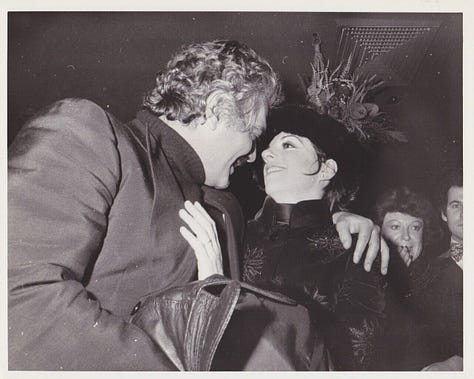

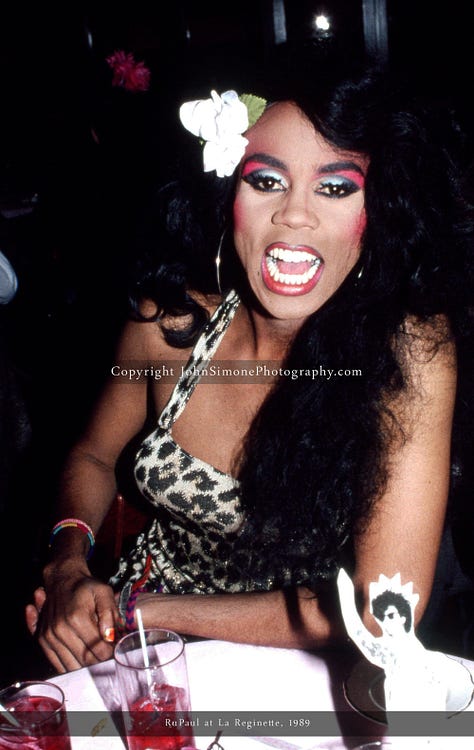
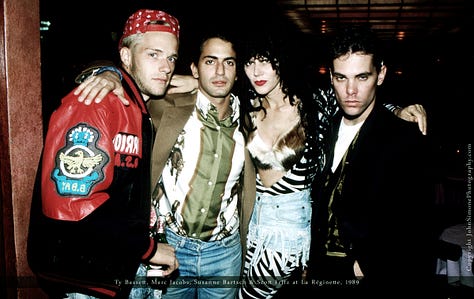
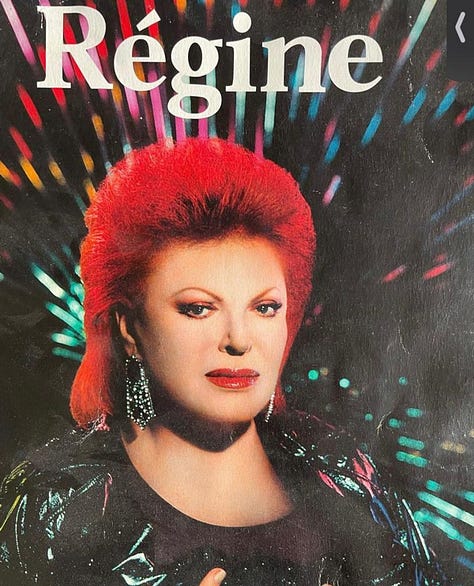








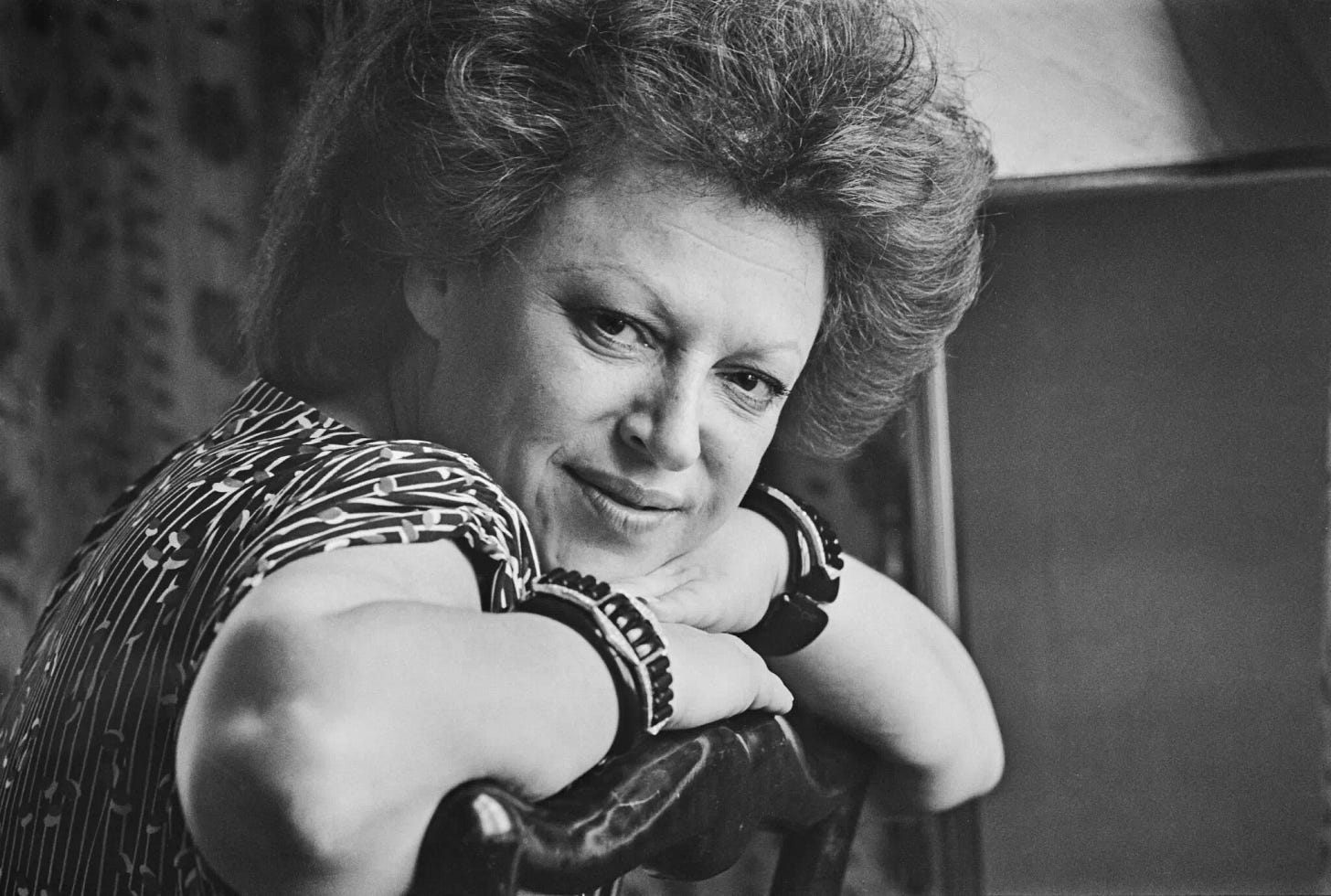


Good morning. who financed Régine throughout her career or at least in the 70s/80s??? who provided the funds for the purchase of all these establishments??
Sincerely